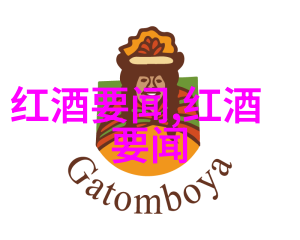法国红酒是世界知名的佳酿之一,其历史悠久、产区众多、品种繁多。其中AOP与AOC两大质量认证体系是法国红酒产业中不可或缺的一部分,它们不仅反映了法国葡萄园生产的传统和创新,还体现了不同产区之间的地理特征和文化差异。

在探讨这两个等级之前,我们首先需要了解它们背后的含义。AOP代表“Appellation d'Origine Protégée”,直译为“保护性原产地名称”;而AOC则代表“Appellation d'Origine Contrôlée”,直译为“受控原产地名称”。简单来说,AOP与AOC都是用来标识某些产品(包括食品和饮料)确保其起源于一个特定区域,并且符合该区域的规定。此外,这两个等级还被用于保证产品质量,以及遵循一定的制程标准。
从历史上看,法国早期就开始实行一种地方性的保护制度,以便保障消费者能够得到高质量的本土产品。在19世纪末至20世纪初时期,为了更好地管理并保护这些地方特色农产品,一系列法律措施被采纳,其中包括设立了现在我们所熟知的AOC系统。

尽管两者的英文缩写有所不同,但它们在法语中的表述非常相似,都指的是一种受保护的地理标志。这意味着所有使用这些标志的地方必须遵守严格的规章制度,无论是在生产过程还是销售环节。而对于消费者来说,这些规章制度确保他们购买到的是真正来自指定地区、高质量来源的小麦面包或者葡萄酒等食品。
不过,在2009年欧盟推出新的《原产地名称保护条约》后,对于这些地理标志进行了一次重大调整。根据这个新条款,将原来只适用于农业产品的一个单一模型扩展到了所有类型的地理标志,从而创造出了今天我们看到的大量不同的分类,如PDO (Protected Designation of Origin) 和PGI (Protected Geographical Indication),以及我们的老朋友APD (Agri-foodstuffs Protected by a Designation of Origin) 和PGI (Geographical Indication for Agricultural Products)。

因此,当谈及到France APO & ACO制定标准过程时,可以看作是一个不断演进发展过程。在这个流程中,不同的地理位置、气候条件以及土壤类型都被视作重要因素,因为它们直接影响到了葡萄成熟度、果汁浓度以及最终口感,因此成为决定一个红酒是否能获得这样的认证的一个关键点。
随着时间推移,这个体系也越来越完善,同时也变得更加精细化。例如,现在已经有超过400个不同的类别涵盖了整个国家,每个类别都有自己的具体要求,比如对于葡萄种植方法、收获季节甚至是瓶装技术都有一定的限制和规范。而这一切都旨在通过最大限度减少外部干预以保持自然生态平衡,从而促进高品质成果产生出来。

此外,由于其地域性质,与其他任何地方无可比拟,使得每一片土地上的独特风味成为另一个加分项。当人们尝试那些经由长途运输过来的东西,他们往往会失去那份特殊之处,那份属于当下与当地同时存在的情感联结,而这种情感联结正是让人如此珍惜本土优质物资的心灵共鸣之处,是使得人们愿意支付额外费用以换取更好的生活享受的一种方式表现出来。
然而,就像任何复杂系统一样,即使出现了这样一套完美设计出的体系,也并非没有它的问题存在。一方面,由于大量小规模农场家承担着维持环境健康责任,并且他们通常拥有极小规模操作能力,他们可能无法实现完全机械化,因此成本较高;另一方面,更广泛范围内的人力资源短缺也导致劳动力成本上升,为企业带来了经济压力。这一点也是为什么许多专业人士认为虽然这个体系可以提供很好的指导线索,但仍然需要更多支持以帮助农民解决日益增长的问题才行。

总之,French red wine industry with its unique classification system, is not only an art form but also a reflection of France's rich history and culture. As the world's most famous wine-producing country, it has been exporting high-quality wines to every corner of the globe since centuries ago. In this context, understanding the difference between these two important classifications - AOP and AOC - can help us better appreciate their role in shaping the global perception and taste preferences towards French red wines.
While many other countries are trying to follow suit in establishing similar systems for their own products, it remains clear that France is still leading the way in terms of protecting its traditional practices while embracing innovation at the same time. The ongoing efforts to improve quality control measures ensure that consumers get what they pay for: authentic products with distinct regional characteristics.
In conclusion, exploring how French red wine producers differentiate themselves through various classifications such as Bordeaux or Burgundy provides valuable insights into what makes them so special. This journey takes you from vineyards planted on limestone slopes near Paris to those nestled within rolling hills near Lyon – each one offering a unique terroir experience that contributes significantly to creating some truly remarkable vintages.
Through examining these differences we can gain deeper appreciation not just for individual regions but also for entire industries which have been shaped over generations by people who care deeply about preserving traditions while pushing boundaries forward simultaneously – something we should all be grateful for when enjoying our next glass of fine French red wine!





